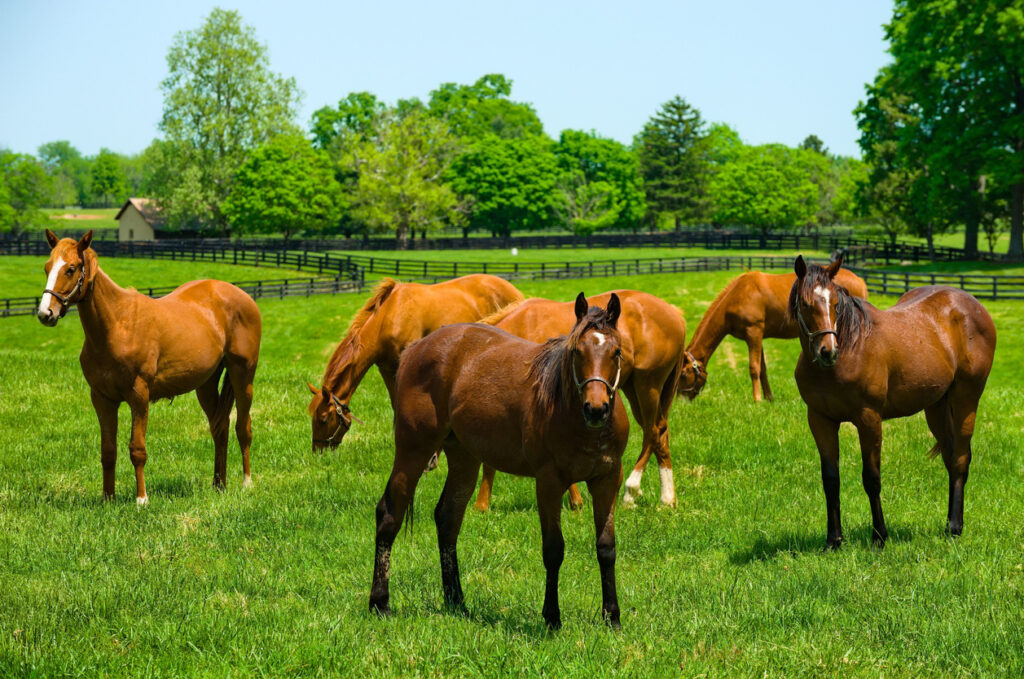If you’ve been relying solely on race records to make breeding decisions, you’re not alone.
It’s one of the most common mistakes in the thoroughbred world. But here’s the blunt truth: race records tell only part of the story, and that story isn’t always what it seems.
To breed consistent winners, you need a broader, smarter approach.
Let’s dive into what you’re missing—and more importantly, how to fix it.
The Problem With Race Records
Race records are tempting.
They’re clean, measurable, and easy to compare. But here’s the catch: they’re also dangerously one-dimensional.
A horse’s racing success is influenced by countless variables—training, track conditions, competition, even luck on race day. None of these have anything to do with breeding potential.
Here’s an example: a top racehorse might pass on genes for speed, but it might also pass along a weak constitution or behavioral issues. If you focus only on wins and times, you’ll miss these critical traits.
And that’s where breeding mistakes start to snowball.
The Real Key: Dam Lines and Complementary Traits
Breeding is a lot like assembling a puzzle.
The goal isn’t just to pick two impressive pieces; it’s to make sure they fit together perfectly. Dam lines are one of the most overlooked pieces of that puzzle.
The dam (mother) contributes half of a foal’s genetics, and her family history often reveals patterns you won’t see in race records alone.
Start by digging into dam lines. Look for consistency—not just in wins, but in health, temperament, and conformation.
Then, focus on complementary traits. For example, if a mare lacks stamina, choose a stallion known for producing distance runners. It’s not about stacking superstars; it’s about balance.
Family History: The Hidden Goldmine
Family history isn’t just about pedigrees and pretty names.
It’s about trends. When you study a horse’s relatives, you start to notice patterns.
Does this bloodline consistently produce sprinters or stayers? Do they excel on turf or dirt? Are they prone to injuries or unusually durable?
For instance, if you’re breeding for sprinting speed, look for a family tree that consistently produces short-distance champions. Don’t just cherry-pick one great ancestor and assume it applies.
Patterns across multiple generations are the real indicators of success.
The Turning Point: Breeding Smarter, Not Harder
Let’s face it—breeding isn’t just a game of luck; it’s a game of strategy.
I learned this the hard way. Early on, I put my faith in flashy race records, convinced they were the ultimate indicator of breeding success.
But after pouring time and money into horses that fell short, I realized my approach was all wrong. The real breakthrough came when I stopped chasing surface-level stats and started focusing on the bigger picture: genetic depth, complementary traits, and family trends.
Once I made this shift, everything clicked. I started producing foals with consistent quality, resilience, and performance.
No more wasted investments or frustrating setbacks—just smarter decisions and better results. It wasn’t luck.
It was a new, intentional way of thinking that paid off in spades.
How to Get Started (3 Steps to Success)
- Study Dam Lines First
Go beyond the mare herself. Look at her dam, her granddam, and her siblings. Is there a pattern of consistent performance, soundness, or longevity? If not, move on. This step weeds out mares with flashy records but weak genetic backing. - Identify Complementary Traits
Make a list of the mare’s strengths and weaknesses. Does she need more speed? A stronger build? Better stamina? Choose a stallion that fills those gaps, rather than doubling down on traits she already has. - Analyze Family Patterns
Dive into the entire bloodline. Look for trends across multiple generations. Are they producing winners, or are they one-hit wonders? Consistency is the key to breeding success.
Avoiding Common Pitfalls
Many breeders make the same errors over and over again. Don’t fall into these traps:
- Overvaluing Recent Performances: Just because a horse had a good season doesn’t mean it’s a good breeder. Look for long-term patterns instead.
- Ignoring Temperament: A high-strung horse might win races, but it can pass along behavioral issues that make training a nightmare.
- Chasing Trends: Stallions that are “hot” this season might not be the best match for your mare. Stick to your strategy, not the hype.
The Confidence to Make Better Decisions
Breeding can feel overwhelming, especially if you’re still learning.
But here’s the good news: once you understand these principles, everything gets easier. You’ll stop second-guessing yourself and start making choices with confidence.
For example, if you’ve studied your mare’s dam line and identified the gaps in her traits, picking the right stallion feels natural. You won’t need to rely on guesswork—or worse, outdated advice.
Every decision will have a clear purpose.
The Long-Term Payoff
Breeding isn’t a short-term game.
The best results often take years to fully materialize. But when you approach it the right way, the payoff is worth the wait.
You’ll create a bloodline that produces consistent winners—not just one lucky success, but generation after generation of winners.
Imagine the pride of watching a foal you bred dominate on the track. Imagine knowing that success wasn’t luck—it was the result of careful, strategic decisions.
That’s the legacy you’re building.
Final Thoughts: Stop Wasting Time and Money
If you’re still relying on race records alone, it’s time to stop.
You’re wasting money on breeding decisions that aren’t backed by the full picture. And worse, you’re missing out on the opportunity to breed horses that consistently succeed.
Here’s what to do next:
Start analyzing dam lines. Study complementary traits. Dive into family patterns.
It’s not complicated, but it does require a shift in mindset. Once you make that shift, you’ll wonder why you ever did it the old way.
The formula for breeding consistent winners isn’t a secret—it’s just a smarter way of thinking. So get started today.
The next generation of winners is waiting!

